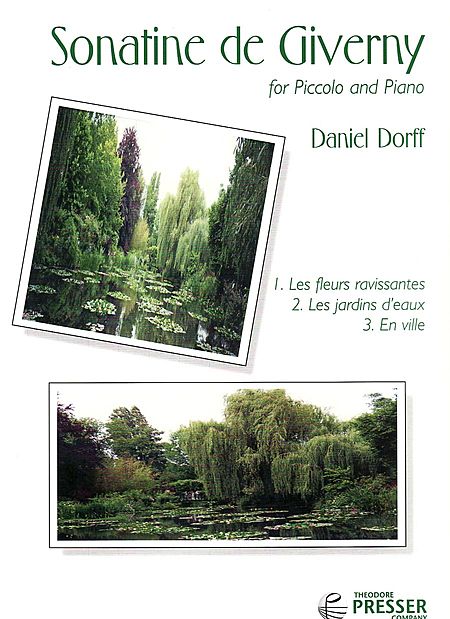Music by DANIEL DORFF |
|
| PROGRAM NOTES by the composer | |
Sonatine de Giverny for Piccolo and Piano |
|
|
By
happy coincidence I visited Paris for the first time a few months later and
spent a day in nearby Giverny at the estate of Claude Monet, the great
impressionist painter. As I saw the ravishing flowers, peaceful water
gardens, and charming village, it became clear that the inspiration for the
piccolo sonatina was falling into place. Sonatine de Giverny
captures my experience seeing what Monet saw and is a musical setting of Giverny
in our lifetime, not of Monet's paintings. The Giverny estate is
carefully preserved to look just as it did 100 years ago, so there is a
fascinating and almost eerie blend of old and new.
Les
fleurs ravissantes
Many
piccoloists have commented on the Sonatine's use of the piccolo to
express tenderness and a wide range of color and emotion, and Jan Gippo writes
in his preface to the publication:
Daniel Dorff's
Sonatine de Giverny is the
first composition for piccolo and piano in the great tradition of the French
School of Ravel, Gaubert, and Roussel. Giverny requires the piccoloist to
perform with a beautiful, shimmering sound and an assortment of vibratos; a big,
rich low register, and a third-octave transparency created through the mastery
of controlled fortissimo. All the French attributes of clarity and subtle
dynamics are now being asked of the piccolo, and Giverny will become the
landmark composition for expressive French piccolo playing. We are grateful for
Dorff's fine effort. Giverny now becomes a musical standard which other
composers must attain.
HIGH A-B TRILL IN MVT. 1 — Some piccoloists have suggested: |
|
last updated February 21, 2020 home |
|
